Events
| Name | organizer | Where |
|---|---|---|
| MBCC “Doing Business with Mongolia seminar and Christmas Receptiom” Dec 10. 2025 London UK | MBCCI | London UK Goodman LLC |
NEWS
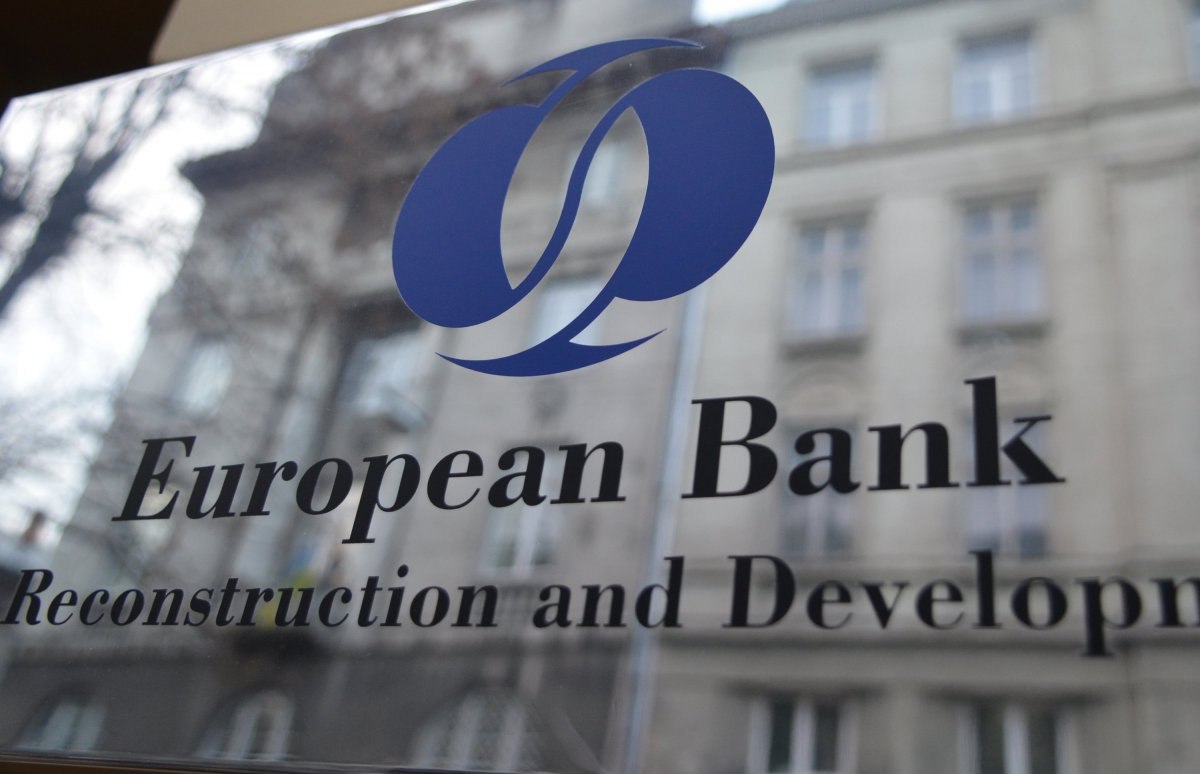
EBRD finances construction of cardiovascular hospital in Mongolia www.ebrd.com
The European Bank for Reconstruction and Development (EBRD) is providing a sovereign loan of up to US$ 34.9 million (€33.5 million equivalent) to the Ministry of Health of Mongolia to finance the construction of a specialised cardiovascular hospital in Ulaanbaatar. The project aims to improve access to healthcare and reduce mortality from cardiovascular diseases in the country.
The financing will enable the construction and commissioning of a modern, around 120-bed cardiovascular facility designed to achieve optimal energy performance and receive national energy performance class A+ green certification for resource-efficient buildings. This green approach will ensure the hospital operates sustainably while delivering high-quality medical services to the population.
The project is the latest under the Ulaanbaatar Green Cities Action Plan, which was approved in 2019 and demonstrates the EBRD's commitment to supporting sustainable urban development and improving quality of life for residents.
The EBRD's loan will be co-financed by a US$ 28.1 million (€27 million) contribution from the government of Mongolia, comprising a mix of government funds and a grant from the Grand Duchy of Luxembourg, reflecting a strong national commitment to healthcare infrastructure development.The EBRD has invested almost €2.5 billion in Mongolia’s economy through 159 projects to date. Approximately 90 per cent of these funds have been used to support private-sector companies.
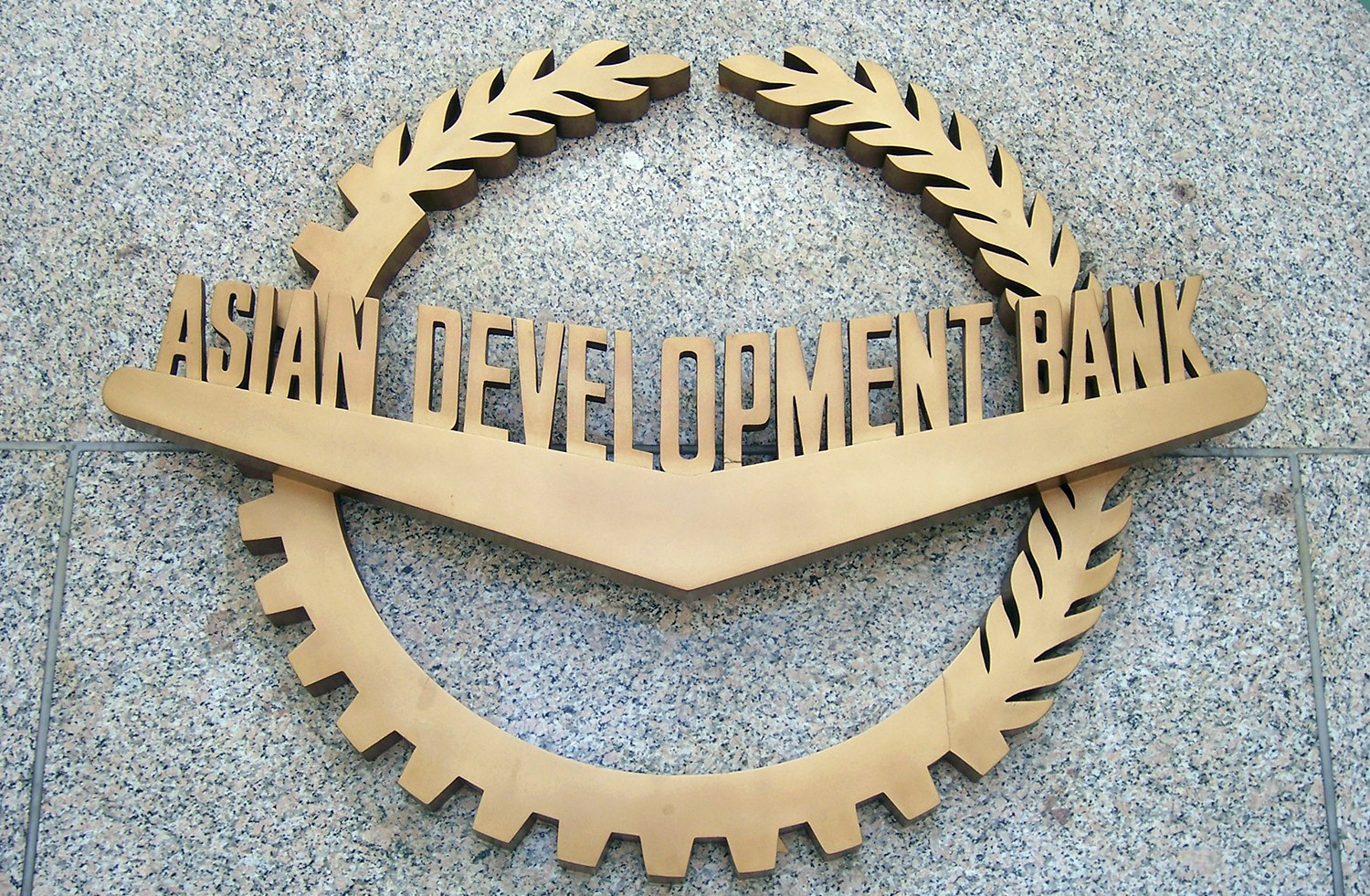
ADB to Support Mongolia’s Largest Solar and Battery Storage Project for Energy Security www.adb.org
The Asian Development Bank (ADB) has been appointed by the Government of Mongolia to serve as transaction advisor for the Stable Solar Energy in Mongolia Project, a landmark renewable energy initiative that will significantly expand the country's clean energy capacity while improving grid stability and reducing dependence on fossil fuel imports.
The project envisions the development of about 115 megawatts (MW) of solar photovoltaic (PV) capacity and 65 MW / 237 megawatt-hours (MWh) of battery energy storage systems (BESS) across Mongolia's Western and Eastern Energy Systems — two of the country's most critical yet isolated grid networks. Once operational, it will represent one of Mongolia's largest renewable energy procurements and the nation's first-ever combined solar and BESS auction.
A Major Milestone in Mongolia's Clean Energy Transition
Mongolia's vast steppes and high solar irradiance provide ideal conditions for solar power generation, but the country's energy system remains heavily dependent on coal-fired plants and imported electricity, particularly from neighbouring Russia. The new project aims to change that by delivering reliable, affordable, and low-carbon power to some of the nation's most remote areas.
"ADB is proud to support Mongolia in advancing its clean energy transition through innovative renewable energy and storage solutions," said Shannon Cowlin, ADB Country Director for Mongolia. "This project will help strengthen energy security, enable greater integration of renewables, and lay the foundation for larger investments in solar and BESS in the years ahead."
The project will deploy advanced battery technologies to store solar energy and provide key grid services such as peak shifting, frequency regulation, and voltage stabilization. By balancing supply and demand more efficiently, the system will make it possible to integrate a higher share of intermittent renewable energy into Mongolia's electricity network.
Supporting a More Reliable and Self-Sufficient Grid
Mongolia's Western Energy System (WES) and Eastern Energy System (EES) are not connected to the central grid and have historically struggled with reliability challenges and limited access to clean power. The addition of solar generation and battery storage will stabilize these networks, helping reduce blackouts and voltage fluctuations while lowering costs associated with fossil fuel imports.
According to ADB experts, the project will also play a vital role in helping Mongolia diversify its energy mix and cut greenhouse gas emissions, in line with its Nationally Determined Contribution (NDC) under the Paris Agreement.
Transparent Bidding and Private Sector Participation
The Stable Solar Energy in Mongolia Project will be implemented through a competitive, transparent auction process, designed to attract private sector investors and independent power producers (IPPs). ADB's transaction advisory role will include structuring the project, designing the tender process, and advising on risk allocation and regulatory frameworks to ensure fair competition and investor confidence.
ADB will also help the government establish long-term power purchase agreements (PPAs) and create a replicable model for future renewable energy and storage investments in the country.
Aligned with Mongolia's Long-Term Energy Vision
The project directly supports Mongolia's State Policy on Energy (2015–2030) and the government's New Recovery Policy, both of which prioritize energy diversification, decarbonization, and infrastructure modernization. It is also consistent with Mongolia's long-term vision to achieve carbon neutrality by 2050, emphasizing the role of clean energy as a cornerstone of economic resilience and sustainability.
Through its collaboration with the Ministry of Energy, ADB aims to ensure that the project contributes to national energy security, job creation, and technological advancement in renewable energy and energy storage systems.
Mongolia's Expanding Renewable Energy Ambitions
Mongolia's renewable energy sector has grown rapidly over the past decade, with solar and wind projects now accounting for nearly 20% of installed capacity. However, the potential remains largely untapped — the country's solar energy resources are estimated at more than 4,500 terawatt-hours (TWh) annually, among the highest in Asia.
By adding battery energy storage to its renewable infrastructure, Mongolia will be able to maximize solar output, store excess generation, and stabilize supply during periods of low production or high demand — a crucial capability for a country with a cold climate and vast, sparsely populated terrain.
Driving Regional and Climate Benefits
ADB's involvement in the Stable Solar Energy Project also aligns with its broader Energy Policy 2021, which focuses on supporting low-carbon, inclusive, and resilient energy systems across Asia and the Pacific. The initiative will contribute to regional climate action goals and set a model for other countries transitioning from fossil fuel dependence to integrated clean energy systems.
In addition to improving energy access and reliability, the project will help reduce air pollution, create local employment opportunities, and promote green technology transfer.
Looking Ahead
Once completed, the Stable Solar Energy in Mongolia Project will stand as a flagship example of sustainable infrastructure development, showcasing how renewable energy combined with storage can deliver both economic and environmental benefits.
"Mongolia's clean energy transition is gathering momentum," Cowlin added. "With ADB's support, this project will demonstrate that renewable power and innovation can drive energy security, stability, and prosperity for all."
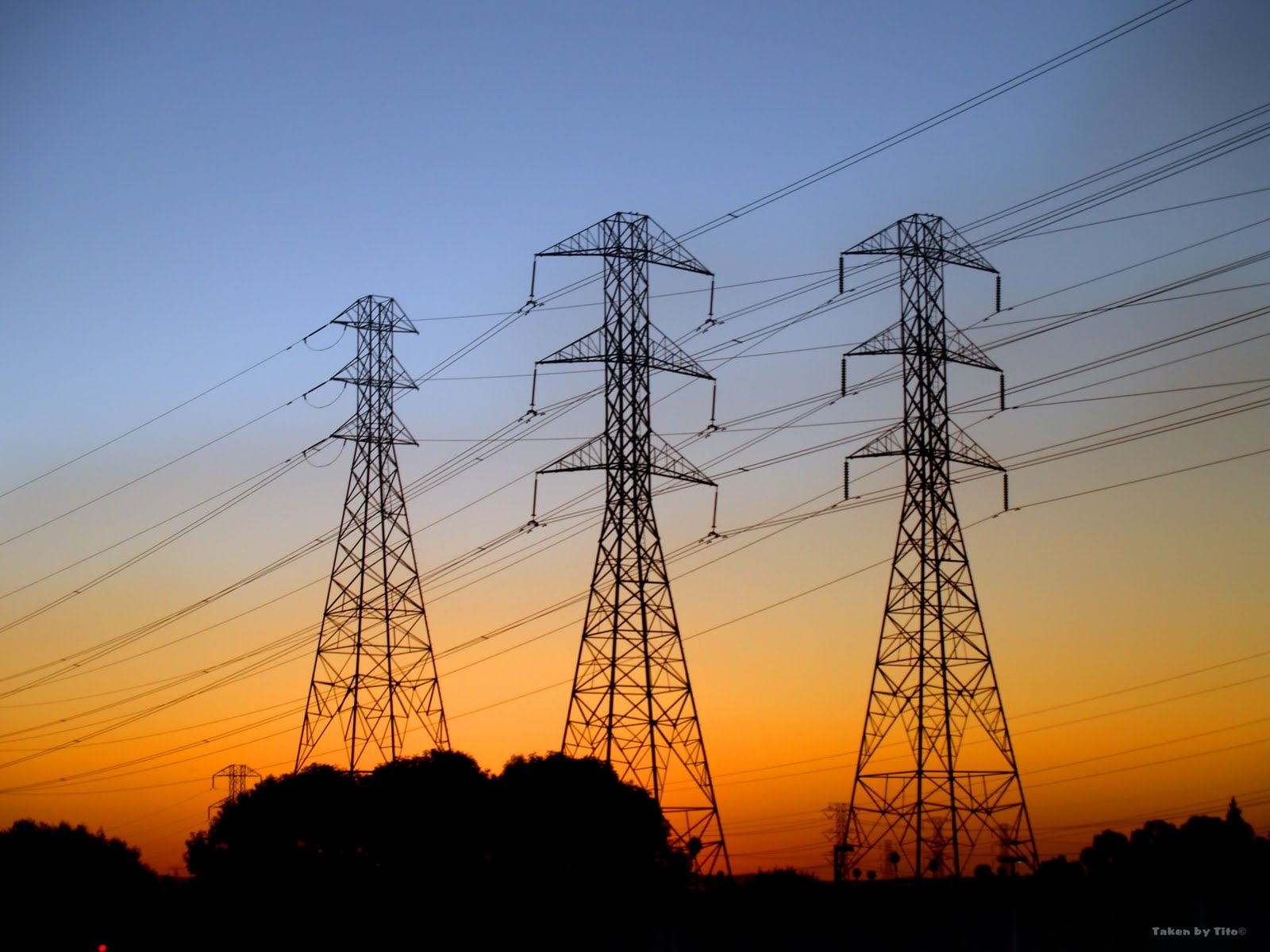
Hunnu City Power Infrastructure Nears Completion www.montsame.mn
Plans are underway to establish key institutions in Hunnu City, including government offices, a free economic zone, universities, a student campus, and integrated transport and logistics facilities.
According to the Governor’s Office of the Capital City Ulaanbaatar, electrical and infrastructure works are progressing as part of this initiative. The “Hunnu” substation is designed to supply electricity to new developments and future buildings within the administrative zone of the city.
The project includes a 110kV overhead power line, a 2x40 MVA 110/35/10 kV “Hunnu” substation, a control building, three enclosed 10 kV distribution units (RP-1, RP-2, RP-3), and a 10kV transmission cable network. Construction and installation are being carried out by Da Khot LLC and Concept Capital Solutions LLC, with progress currently at 84 percent.
Under the long-term development strategy “Vision 2050,” Hunnu City is envisioned as Mongolia’s principal transport and logistics hub, strategically centered around Chinggis Khaan International Airport in the Khushig Valley. The city is also expected to evolve into a unified air passenger gateway for Northeast Asia.
Project initiators anticipate that Hunnu City will ease congestion in Ulaanbaatar and contribute to national economic growth by 10-15 percent. The development of the Bogd Khaan Railway, a free economic zone, and an integrated transport and logistics center will support this goal.
On June 5, 2024, the Parliament of Mongolia adopted the Law on the Legal Status of Hunnu City, officially designating it as a satellite city of Ulaanbaatar with strategic functions. The law establishes Hunnu City’s special administrative structure, economic framework, and governance model and mandates integrated development with Tuv aimag to generate shared economic benefits.

Mongolia Commissions 53 New Factories as Part of ‘Food Revolution’ Plan www.montsame.mn
President of Mongolia Khurelsukh Ukhnaa visited national manufacturing enterprises within the framework of the National Movement for “Food Supply and Security.”
President Khurelsukh’s first stop was at the “Agro Feed” plant of Tumen Shuvuut JSC. He was received by Chairman of the Board L. Erkhembayar and Chief Executive Officer J. Bold, who briefed him on the company’s equipment upgrades, new facilities, and operations.
With the help of a long-term concessional loan, Tumen Shuvuut JSC commissioned its "Tumen Shuvuut-2" plant last year and is currently building its next facility. The company plans to produce 170 million eggs this year and 250 million next year, which will meet 40 percent of domestic demand, reaching 50 percent by 2026 when operating at full capacity. Its Agro Feed plant produces poultry and livestock feed, supplying 25 poultry farms in 21 provinces. Production is expected to reach 40,000 tons this year and 55,000 tons next year.
The company purchased 38,000 tons of locally grown wheat, bran, and oats this year and plans to buy 53,000 tons in 2026. Its executives also introduced a project for breeding Dorper sheep, a meat-oriented livestock species. Established in 2004, Tumen Shuvuut JSC operates four subsidiary plants with over 360 employees, producing 17 types of packaged eggs, 10 types of animal feed, and organic fertilizer made from poultry manure. The company has more than 19,000 shareholders and distributed MNT 10 billion in dividends between 2019 and 2023.
Before 2020, Mongolia imported over half of its egg supply, while domestic producers operated with outdated equipment and facilities. Since the launch of the National Campaign for Food Supply and Security in 2022, the number of enterprises has increased, their capacity and equipment have improved, and production has grown accordingly. Within the next two years, over 30 domestic poultry farms are expected to raise a total of 3 million birds, producing an average of 650 million eggs per year, enabling Mongolia to meet 80 percent of domestic demand this year and achieve full self-sufficiency next year.
President Khurelsukh expressed appreciation to the national enterprises and wealth creators that have shown commitment and delivered tangible results under the campaign, which aims to ensure Mongolia’s self-sufficiency in 19 key food products. To date, over 3,000 enterprises have received MNT 1.2 trillion in long-term concessional loans under the Food Supply and Security National Movement.

Deputy Prime Minister S.Amarsaikhan dismissed for violating Accountability agreement www.gogo.mn
Prime Minister G.Zandanshatar announced at the Cabinet meeting that Deputy Prime Minister S.Amarsaikhan has been dismissed from office for violating the government’s Accountability agreement.
“The illegal activities of ill-intentioned actors seeking to seize state power for the sake of office, driven by vengeful motives and using unconstitutional means, have intensified. Unfortunately, some Ministers took part in this activity, urged others to sign, and pressured members. For these reasons I am announcing the dismissal of Deputy Prime Minister S.Amarsaikhan. Expressing positions and taking actions contrary to the Chamber is not consistent with the Accountability agreement. Therefore, I am announcing the decision made last night.”

State Emergency Commission orders readiness amid fuel-shortage risks www.gogo.mn
On October 28, the State Emergency Commission held a meeting to respond to complaints from rural and local residents about fuel shortages and to coordinate preparedness measures.
S.Amarsaikhan, Chief of the State Emergency Commission and Deputy Prime Minister, urged agencies to provide regular, transparent updates to the public about fuel availability across the capital, provinces and local gas stations, reporting where supplies are depleted and where deliveries are being made. He warned that, although the fuel shortage is expected to be resolved soon, secondary effects, such as higher hay-transport and interstate freight costs, could push up prices for imported goods and fodder.
“The State Emergency Commission instructed relevant organizations to prepare thoroughly for winter from June to August, to monitor supplies of fuel, gasoline, fodder and hay, and to visit affected provinces. However, some difficulties are beyond our control; the government, private sector and local authorities must work together to overcome them” he said.
S.Amarsaikhan stressed that keeping thermal power plants operating normally and maintaining renewable generation are essential to reduce winter hardship. He noted that peak winter electricity demand in the central region could reach 1,800 MW, creating a significant risk if not managed, and ordered agencies to develop step-by-step contingency plans.
The commission also instructed authorities to monitor herders moving to mountain pastures and to ensure the safety of their livestock as a severe winter is expected in western provinces. With about 1.1 million head of livestock already in the grass-fed area, and that number likely to rise, the commission ordered measures to secure uninterrupted supplies of food, feed and fuel for herders, to provide rapid assistance when roads are blocked, and to keep emergency, health and police services available without delay.
Provinces and soums emergency commissions were directed to operate 24 hours a day to respond promptly to any crisis.
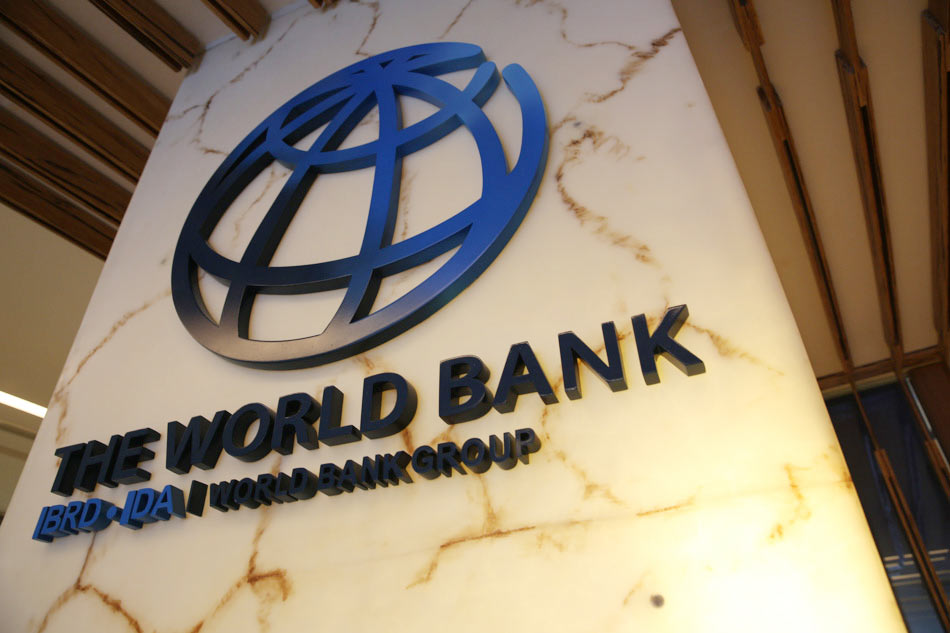
World Bank to Assist Mongolia in COP17 Preparations www.montsame.mn
Minister of Environment and Climate Change, Batbaatar Bat, met with Vice President for Sustainable Development at the World Bank, Juergen Voegle, during a high-level conservation and investment forum hosted by the International Conservation Caucus Foundation (ICCF Group) in Washington, D.C. The meeting was also attended by Valerie Hickey, Global Director for Climate Change at the World Bank.
Discussions focused on preparations for the 17th Conference of the Parties (COP17) to the United Nations Convention to Combat Desertification (UNCCD), which Mongolia will host in August 2026. The two sides also exchanged views on broader cooperation on environmental protection and climate change mitigation.
At the meeting, the World Bank expressed its full support for Mongolia’s COP17 preparations and announced plans to dispatch a technical team to Ulaanbaatar in November to assist with coordination and planning.
The parties reaffirmed their shared commitment to greening the agricultural sector, improving soil and water quality, and localizing system-based approaches to turn sustainable solutions into practical action.
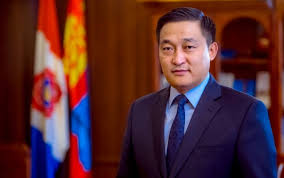
Criminal investigation launched against MP D.Amarbayasgalan www.gogo.mn
The Prosecutor’s Office has submitted a proposal to open a criminal case against Member of Parliament D.Amarbayasgalan, and the Independent Authority Against Corruption of Mongolia has announced that investigators have charged him under provisions of the Criminal Code, the agencies said in a joint statement.
According to the IAAC’s announcement, the investigation opened by the Special Criminal Division of the Criminal Investigation Department names D.Amarbayasgalan on suspected counts that include abuse of power and official position by a politically influential person, receiving a large bribe, and unjust enrichment by a politically influential person. The investigation is ongoing and authorities said they will provide more details as the probe progresses.
The Prosecutor’s Office reviewed the anti-corruption IAAC’s proposal last week and has launched the formal investigation, the statement said.

Mongolia and Germany to Hold Negotiations on Development Cooperation www.montsame.mn
The Negotiations on Development Cooperation between the Government of Mongolia and the Government of the Federal Republic of Germany are scheduled to take place in Ulaanbaatar on November 30, 2025.
The negotiations aim to review ongoing and prospective development projects and initiatives, and to establish a roadmap for future joint efforts. It serves as a platform to strengthen bilateral ties and enhance collaboration in key areas of mutual interest.
According to the Ministry of Economy and Development (MED) of Mongolia, a preparatory meeting was held on October 27, 2025, between the senior representatives of both governments. Discussions focused on exchanging information on government policy and reforms.
The Mongolian delegation outlined its efforts to support private sector growth, improve the investment climate, and promote public-private partnerships.
The German delegation shared its perspectives on future cooperation and reviewed progress achieved under the existing framework with the Government of Mongolia.
Both sides exchanged views on the preparatory work for the negotiations, as well as achievements and prospects in key areas including sustainable economic development, higher education, biodiversity conservation, environmental protection, climate change mitigation, and energy transition.
Germany remains one of Mongolia’s leading development partners within the European Union, having extended concessional loans, technical assistance, and aid to support Mongolia’s sustainable economic, social, and environmental development.
At the previous round of negotiations held in 2023, Germany committed a record EUR 78 million in bilateral assistance. Additionally, through collaboration with the Global Fund, Mongolia joined the “Debt2Health” initiative, converting up to EUR 29 million of debt payments into grants. This enabled the implementation of health sector projects targeting infectious diseases and contributed to improving healthcare quality, marking a significant milestone in bilateral cooperation.
Germany was the first European country to establish a strategic partnership with Mongolia. Building on this foundation, the two countries agreed to deepen bilateral cooperation by strengthening the economic, investment, and business environment and by promoting increased trade and investment flows.
The intergovernmental negotiations are held biannually and will be co-chaired by Batkhuu Idesh, State Secretary of the Ministry of Economy and Development of Mongolia (MED), and Yiannis Neophytou, Head of Division at the German Federal Ministry for Economic Cooperation and Development (BMZ).

Mongolian health workers begin strike after eight days of protest www.asianews.network
Health workers across Mongolia have launched a strike after eight days of protests, the Confederation of Mongolian Trade Union announced. Union leaders said the sector moved to the next stage of action because the government has not taken concrete measures during the recent demonstrations.
The strikers are demanding that the basic salary for health workers be raised to MNT 3.5 million, that state funding for the health sector be increased to 6% of GDP, and that the cost of full work uniforms for medical staff be specifically covered in the state budget.
The union did not immediately provide details on the strike’s scope or which services will be affected; officials and health sector representatives are expected to release further information as the situation develops.
- «
- 1
- 2
- 3
- 4
- 5
- 6
- 7
- 8
- 9
- 10
- 11
- 12
- 13
- 14
- 15
- 16
- 17
- 18
- 19
- 20
- 21
- 22
- 23
- 24
- 25
- 26
- 27
- 28
- 29
- 30
- 31
- 32
- 33
- 34
- 35
- 36
- 37
- 38
- 39
- 40
- 41
- 42
- 43
- 44
- 45
- 46
- 47
- 48
- 49
- 50
- 51
- 52
- 53
- 54
- 55
- 56
- 57
- 58
- 59
- 60
- 61
- 62
- 63
- 64
- 65
- 66
- 67
- 68
- 69
- 70
- 71
- 72
- 73
- 74
- 75
- 76
- 77
- 78
- 79
- 80
- 81
- 82
- 83
- 84
- 85
- 86
- 87
- 88
- 89
- 90
- 91
- 92
- 93
- 94
- 95
- 96
- 97
- 98
- 99
- 100
- 101
- 102
- 103
- 104
- 105
- 106
- 107
- 108
- 109
- 110
- 111
- 112
- 113
- 114
- 115
- 116
- 117
- 118
- 119
- 120
- 121
- 122
- 123
- 124
- 125
- 126
- 127
- 128
- 129
- 130
- 131
- 132
- 133
- 134
- 135
- 136
- 137
- 138
- 139
- 140
- 141
- 142
- 143
- 144
- 145
- 146
- 147
- 148
- 149
- 150
- 151
- 152
- 153
- 154
- 155
- 156
- 157
- 158
- 159
- 160
- 161
- 162
- 163
- 164
- 165
- 166
- 167
- 168
- 169
- 170
- 171
- 172
- 173
- 174
- 175
- 176
- 177
- 178
- 179
- 180
- 181
- 182
- 183
- 184
- 185
- 186
- 187
- 188
- 189
- 190
- 191
- 192
- 193
- 194
- 195
- 196
- 197
- 198
- 199
- 200
- 201
- 202
- 203
- 204
- 205
- 206
- 207
- 208
- 209
- 210
- 211
- 212
- 213
- 214
- 215
- 216
- 217
- 218
- 219
- 220
- 221
- 222
- 223
- 224
- 225
- 226
- 227
- 228
- 229
- 230
- 231
- 232
- 233
- 234
- 235
- 236
- 237
- 238
- 239
- 240
- 241
- 242
- 243
- 244
- 245
- 246
- 247
- 248
- 249
- 250
- 251
- 252
- 253
- 254
- 255
- 256
- 257
- 258
- 259
- 260
- 261
- 262
- 263
- 264
- 265
- 266
- 267
- 268
- 269
- 270
- 271
- 272
- 273
- 274
- 275
- 276
- 277
- 278
- 279
- 280
- 281
- 282
- 283
- 284
- 285
- 286
- 287
- 288
- 289
- 290
- 291
- 292
- 293
- 294
- 295
- 296
- 297
- 298
- 299
- 300
- 301
- 302
- 303
- 304
- 305
- 306
- 307
- 308
- 309
- 310
- 311
- 312
- 313
- 314
- 315
- 316
- 317
- 318
- 319
- 320
- 321
- 322
- 323
- 324
- 325
- 326
- 327
- 328
- 329
- 330
- 331
- 332
- 333
- 334
- 335
- 336
- 337
- 338
- 339
- 340
- 341
- 342
- 343
- 344
- 345
- 346
- 347
- 348
- 349
- 350
- 351
- 352
- 353
- 354
- 355
- 356
- 357
- 358
- 359
- 360
- 361
- 362
- 363
- 364
- 365
- 366
- 367
- 368
- 369
- 370
- 371
- 372
- 373
- 374
- 375
- 376
- 377
- 378
- 379
- 380
- 381
- 382
- 383
- 384
- 385
- 386
- 387
- 388
- 389
- 390
- 391
- 392
- 393
- 394
- 395
- 396
- 397
- 398
- 399
- 400
- 401
- 402
- 403
- 404
- 405
- 406
- 407
- 408
- 409
- 410
- 411
- 412
- 413
- 414
- 415
- 416
- 417
- 418
- 419
- 420
- 421
- 422
- 423
- 424
- 425
- 426
- 427
- 428
- 429
- 430
- 431
- 432
- 433
- 434
- 435
- 436
- 437
- 438
- 439
- 440
- 441
- 442
- 443
- 444
- 445
- 446
- 447
- 448
- 449
- 450
- 451
- 452
- 453
- 454
- 455
- 456
- 457
- 458
- 459
- 460
- 461
- 462
- 463
- 464
- 465
- 466
- 467
- 468
- 469
- 470
- 471
- 472
- 473
- 474
- 475
- 476
- 477
- 478
- 479
- 480
- 481
- 482
- 483
- 484
- 485
- 486
- 487
- 488
- 489
- 490
- 491
- 492
- 493
- 494
- 495
- 496
- 497
- 498
- 499
- 500
- 501
- 502
- 503
- 504
- 505
- 506
- 507
- 508
- 509
- 510
- 511
- 512
- 513
- 514
- 515
- 516
- 517
- 518
- 519
- 520
- 521
- 522
- 523
- 524
- 525
- 526
- 527
- 528
- 529
- 530
- 531
- 532
- 533
- 534
- 535
- 536
- 537
- 538
- 539
- 540
- 541
- 542
- 543
- 544
- 545
- 546
- 547
- 548
- 549
- 550
- 551
- 552
- 553
- 554
- 555
- 556
- 557
- 558
- 559
- 560
- 561
- 562
- 563
- 564
- 565
- 566
- 567
- 568
- 569
- 570
- 571
- 572
- 573
- 574
- 575
- 576
- 577
- 578
- 579
- 580
- 581
- 582
- 583
- 584
- 585
- 586
- 587
- 588
- 589
- 590
- 591
- 592
- 593
- 594
- 595
- 596
- 597
- 598
- 599
- 600
- 601
- 602
- 603
- 604
- 605
- 606
- 607
- 608
- 609
- 610
- 611
- 612
- 613
- 614
- 615
- 616
- 617
- 618
- 619
- 620
- 621
- 622
- 623
- 624
- 625
- 626
- 627
- 628
- 629
- 630
- 631
- 632
- 633
- 634
- 635
- 636
- 637
- 638
- 639
- 640
- 641
- 642
- 643
- 644
- 645
- 646
- 647
- 648
- 649
- 650
- 651
- 652
- 653
- 654
- 655
- 656
- 657
- 658
- 659
- 660
- 661
- 662
- 663
- 664
- 665
- 666
- 667
- 668
- 669
- 670
- 671
- 672
- 673
- 674
- 675
- 676
- 677
- 678
- 679
- 680
- 681
- 682
- 683
- 684
- 685
- 686
- 687
- 688
- 689
- 690
- 691
- 692
- 693
- 694
- 695
- 696
- 697
- 698
- 699
- 700
- 701
- 702
- 703
- 704
- 705
- 706
- 707
- 708
- 709
- 710
- 711
- 712
- 713
- 714
- 715
- 716
- 717
- 718
- 719
- 720
- 721
- 722
- 723
- 724
- 725
- 726
- 727
- 728
- 729
- 730
- 731
- 732
- 733
- 734
- 735
- 736
- 737
- 738
- 739
- 740
- 741
- 742
- 743
- 744
- 745
- 746
- 747
- 748
- 749
- 750
- 751
- 752
- 753
- 754
- 755
- 756
- 757
- 758
- 759
- 760
- 761
- 762
- 763
- 764
- 765
- 766
- 767
- 768
- 769
- 770
- 771
- 772
- 773
- 774
- 775
- 776
- 777
- 778
- 779
- 780
- 781
- 782
- 783
- 784
- 785
- 786
- 787
- 788
- 789
- 790
- 791
- 792
- 793
- 794
- 795
- 796
- 797
- 798
- 799
- 800
- 801
- 802
- 803
- 804
- 805
- 806
- 807
- 808
- 809
- 810
- 811
- 812
- 813
- 814
- 815
- 816
- 817
- 818
- 819
- 820
- 821
- 822
- 823
- 824
- 825
- 826
- 827
- 828
- 829
- 830
- 831
- 832
- 833
- 834
- 835
- 836
- 837
- 838
- 839
- 840
- 841
- 842
- 843
- 844
- 845
- 846
- 847
- 848
- 849
- 850
- 851
- 852
- 853
- 854
- 855
- 856
- 857
- 858
- 859
- 860
- 861
- 862
- 863
- 864
- 865
- 866
- 867
- 868
- 869
- 870
- 871
- 872
- 873
- 874
- 875
- 876
- 877
- 878
- 879
- 880
- 881
- 882
- 883
- 884
- 885
- 886
- 887
- 888
- 889
- 890
- 891
- 892
- 893
- 894
- 895
- 896
- 897
- 898
- 899
- 900
- 901
- 902
- 903
- 904
- 905
- 906
- 907
- 908
- 909
- 910
- 911
- 912
- 913
- 914
- 915
- 916
- 917
- 918
- 919
- 920
- 921
- 922
- 923
- 924
- 925
- 926
- 927
- 928
- 929
- 930
- 931
- 932
- 933
- 934
- 935
- 936
- 937
- 938
- 939
- 940
- 941
- 942
- 943
- 944
- 945
- 946
- 947
- 948
- 949
- 950
- 951
- 952
- 953
- 954
- 955
- 956
- 957
- 958
- 959
- 960
- 961
- 962
- 963
- 964
- 965
- 966
- 967
- 968
- 969
- 970
- 971
- 972
- 973
- 974
- 975
- 976
- 977
- 978
- 979
- 980
- 981
- 982
- 983
- 984
- 985
- 986
- 987
- 988
- 989
- 990
- 991
- 992
- 993
- 994
- 995
- 996
- 997
- 998
- 999
- 1000
- 1001
- 1002
- 1003
- 1004
- 1005
- 1006
- 1007
- 1008
- 1009
- 1010
- 1011
- 1012
- 1013
- 1014
- 1015
- 1016
- 1017
- 1018
- 1019
- 1020
- 1021
- 1022
- 1023
- 1024
- 1025
- 1026
- 1027
- 1028
- 1029
- 1030
- 1031
- 1032
- 1033
- 1034
- 1035
- 1036
- 1037
- 1038
- 1039
- 1040
- 1041
- 1042
- 1043
- 1044
- 1045
- 1046
- 1047
- 1048
- 1049
- 1050
- 1051
- 1052
- 1053
- 1054
- 1055
- 1056
- 1057
- 1058
- 1059
- 1060
- 1061
- 1062
- 1063
- 1064
- 1065
- 1066
- 1067
- 1068
- 1069
- 1070
- 1071
- 1072
- 1073
- 1074
- 1075
- 1076
- 1077
- 1078
- 1079
- 1080
- 1081
- 1082
- 1083
- 1084
- 1085
- 1086
- 1087
- 1088
- 1089
- 1090
- 1091
- 1092
- 1093
- 1094
- 1095
- 1096
- 1097
- 1098
- 1099
- 1100
- 1101
- 1102
- 1103
- 1104
- 1105
- 1106
- 1107
- 1108
- 1109
- 1110
- 1111
- 1112
- 1113
- 1114
- 1115
- 1116
- 1117
- 1118
- 1119
- 1120
- 1121
- 1122
- 1123
- 1124
- 1125
- 1126
- 1127
- 1128
- 1129
- 1130
- 1131
- 1132
- 1133
- 1134
- 1135
- 1136
- 1137
- 1138
- 1139
- 1140
- 1141
- 1142
- 1143
- 1144
- 1145
- 1146
- 1147
- 1148
- 1149
- 1150
- 1151
- 1152
- 1153
- 1154
- 1155
- 1156
- 1157
- 1158
- 1159
- 1160
- 1161
- 1162
- 1163
- 1164
- 1165
- 1166
- 1167
- 1168
- 1169
- 1170
- 1171
- 1172
- 1173
- 1174
- 1175
- 1176
- 1177
- 1178
- 1179
- 1180
- 1181
- 1182
- 1183
- 1184
- 1185
- 1186
- 1187
- 1188
- 1189
- 1190
- 1191
- 1192
- 1193
- 1194
- 1195
- 1196
- 1197
- 1198
- 1199
- 1200
- 1201
- 1202
- 1203
- 1204
- 1205
- 1206
- 1207
- 1208
- 1209
- 1210
- 1211
- 1212
- 1213
- 1214
- 1215
- 1216
- 1217
- 1218
- 1219
- 1220
- 1221
- 1222
- 1223
- 1224
- 1225
- 1226
- 1227
- 1228
- 1229
- 1230
- 1231
- 1232
- 1233
- 1234
- 1235
- 1236
- 1237
- 1238
- 1239
- 1240
- 1241
- 1242
- 1243
- 1244
- 1245
- 1246
- 1247
- 1248
- 1249
- 1250
- 1251
- 1252
- 1253
- 1254
- 1255
- 1256
- 1257
- 1258
- 1259
- 1260
- 1261
- 1262
- 1263
- 1264
- 1265
- 1266
- 1267
- 1268
- 1269
- 1270
- 1271
- 1272
- 1273
- 1274
- 1275
- 1276
- 1277
- 1278
- 1279
- 1280
- 1281
- 1282
- 1283
- 1284
- 1285
- 1286
- 1287
- 1288
- 1289
- 1290
- 1291
- 1292
- 1293
- 1294
- 1295
- 1296
- 1297
- 1298
- 1299
- 1300
- 1301
- 1302
- 1303
- 1304
- 1305
- 1306
- 1307
- 1308
- 1309
- 1310
- 1311
- 1312
- 1313
- 1314
- 1315
- 1316
- 1317
- 1318
- 1319
- 1320
- 1321
- 1322
- 1323
- 1324
- 1325
- 1326
- 1327
- 1328
- 1329
- 1330
- 1331
- 1332
- 1333
- 1334
- 1335
- 1336
- 1337
- 1338
- 1339
- 1340
- 1341
- 1342
- 1343
- 1344
- 1345
- 1346
- 1347
- 1348
- 1349
- 1350
- 1351
- 1352
- 1353
- 1354
- 1355
- 1356
- 1357
- 1358
- 1359
- 1360
- 1361
- 1362
- 1363
- 1364
- 1365
- 1366
- 1367
- 1368
- 1369
- 1370
- 1371
- 1372
- 1373
- 1374
- 1375
- 1376
- 1377
- 1378
- 1379
- 1380
- 1381
- 1382
- 1383
- 1384
- 1385
- 1386
- 1387
- 1388
- 1389
- 1390
- 1391
- 1392
- 1393
- 1394
- 1395
- 1396
- 1397
- 1398
- 1399
- 1400
- 1401
- 1402
- 1403
- 1404
- 1405
- 1406
- 1407
- 1408
- 1409
- 1410
- 1411
- 1412
- 1413
- 1414
- 1415
- 1416
- 1417
- 1418
- 1419
- 1420
- 1421
- 1422
- 1423
- 1424
- 1425
- 1426
- 1427
- 1428
- 1429
- 1430
- 1431
- 1432
- 1433
- 1434
- 1435
- 1436
- 1437
- 1438
- 1439
- 1440
- 1441
- 1442
- 1443
- 1444
- 1445
- 1446
- 1447
- 1448
- 1449
- 1450
- 1451
- 1452
- 1453
- 1454
- 1455
- 1456
- 1457
- 1458
- 1459
- 1460
- 1461
- 1462
- 1463
- 1464
- 1465
- 1466
- 1467
- 1468
- 1469
- 1470
- 1471
- 1472
- 1473
- 1474
- 1475
- 1476
- 1477
- 1478
- 1479
- 1480
- 1481
- 1482
- 1483
- 1484
- 1485
- 1486
- 1487
- 1488
- 1489
- 1490
- 1491
- 1492
- 1493
- 1494
- 1495
- 1496
- 1497
- 1498
- 1499
- 1500
- 1501
- 1502
- 1503
- 1504
- 1505
- 1506
- 1507
- 1508
- 1509
- 1510
- 1511
- 1512
- 1513
- 1514
- 1515
- 1516
- 1517
- 1518
- 1519
- 1520
- 1521
- 1522
- 1523
- 1524
- 1525
- 1526
- 1527
- 1528
- 1529
- 1530
- 1531
- 1532
- 1533
- 1534
- 1535
- 1536
- 1537
- 1538
- 1539
- 1540
- 1541
- 1542
- 1543
- 1544
- 1545
- 1546
- 1547
- 1548
- 1549
- 1550
- 1551
- 1552
- 1553
- 1554
- 1555
- 1556
- 1557
- 1558
- 1559
- 1560
- 1561
- 1562
- 1563
- 1564
- 1565
- 1566
- 1567
- 1568
- 1569
- 1570
- 1571
- 1572
- 1573
- 1574
- 1575
- 1576
- 1577
- 1578
- 1579
- 1580
- 1581
- 1582
- 1583
- 1584
- 1585
- 1586
- 1587
- 1588
- 1589
- 1590
- 1591
- 1592
- 1593
- 1594
- 1595
- 1596
- 1597
- 1598
- 1599
- 1600
- 1601
- 1602
- 1603
- 1604
- 1605
- 1606
- 1607
- 1608
- 1609
- 1610
- 1611
- 1612
- 1613
- 1614
- 1615
- 1616
- 1617
- 1618
- 1619
- 1620
- 1621
- 1622
- 1623
- 1624
- 1625
- 1626
- 1627
- 1628
- 1629
- 1630
- 1631
- 1632
- 1633
- 1634
- 1635
- 1636
- 1637
- 1638
- 1639
- 1640
- 1641
- 1642
- 1643
- 1644
- 1645
- 1646
- 1647
- 1648
- 1649
- 1650
- 1651
- 1652
- 1653
- 1654
- 1655
- 1656
- 1657
- 1658
- 1659
- 1660
- 1661
- 1662
- 1663
- 1664
- 1665
- 1666
- 1667
- 1668
- 1669
- 1670
- 1671
- 1672
- 1673
- 1674
- 1675
- 1676
- 1677
- 1678
- 1679
- 1680
- 1681
- 1682
- 1683
- 1684
- 1685
- 1686
- 1687
- 1688
- 1689
- 1690
- 1691
- 1692
- 1693
- 1694
- »






